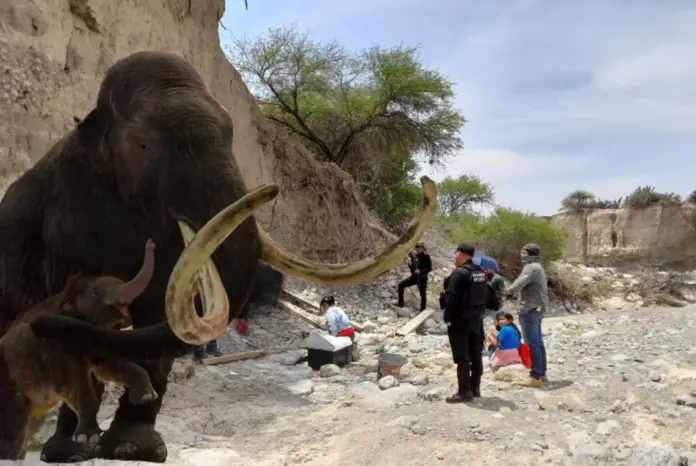A fossil remains that could belong to a mammoth were found in a gap leading to the Francisco Villa Ejido, in the municipality of Tula, Tamaulipas. The discovery was handled by personnel from the National Institute of Anthropology and History (INAH), with the support of members of the State Guard, who provided logistical support and security during the excavation work.
An anonymous call revealed the discovery of the Tamaulipas mammoth.
According to a news bulletin, the discovery arose after an anonymous call alerted authorities to the presence of visible bone remains in the stream known as El Vado La Muralla, which connects with the Calabacillas Ejido, in the municipality of Bustamante.
INAH personnel immediately went to the site, where they carried out preliminary excavation work. Although only one specimen was recovered, the site will be monitored for more remains.
The extracted fragment will be analyzed by specialists to determine if it corresponds to the pelvis of a mastodon, a species related to mammoths that inhabited the Americas thousands of years ago. If confirmed, the discovery would add to the state’s paleontological records, strengthening the region’s natural and historical richness.
Did mammoths live in Mexico? This is what history tells us.
Yes, mammoths inhabited much of Mexico, especially during the Pleistocene era. Fossil remains have been found in several states, such as the State of Mexico, and recently in Tamaulipas. These findings have shed new light on their way of life and also on how early humans hunted them to survive.

Source: unotv




